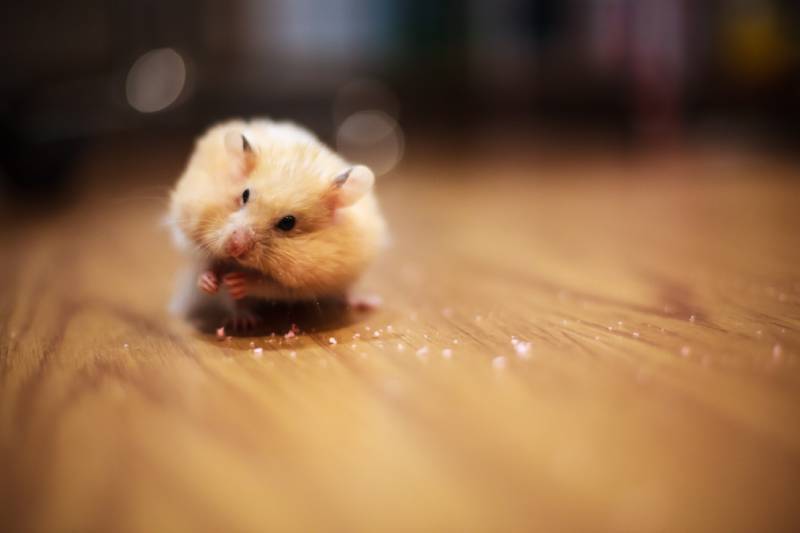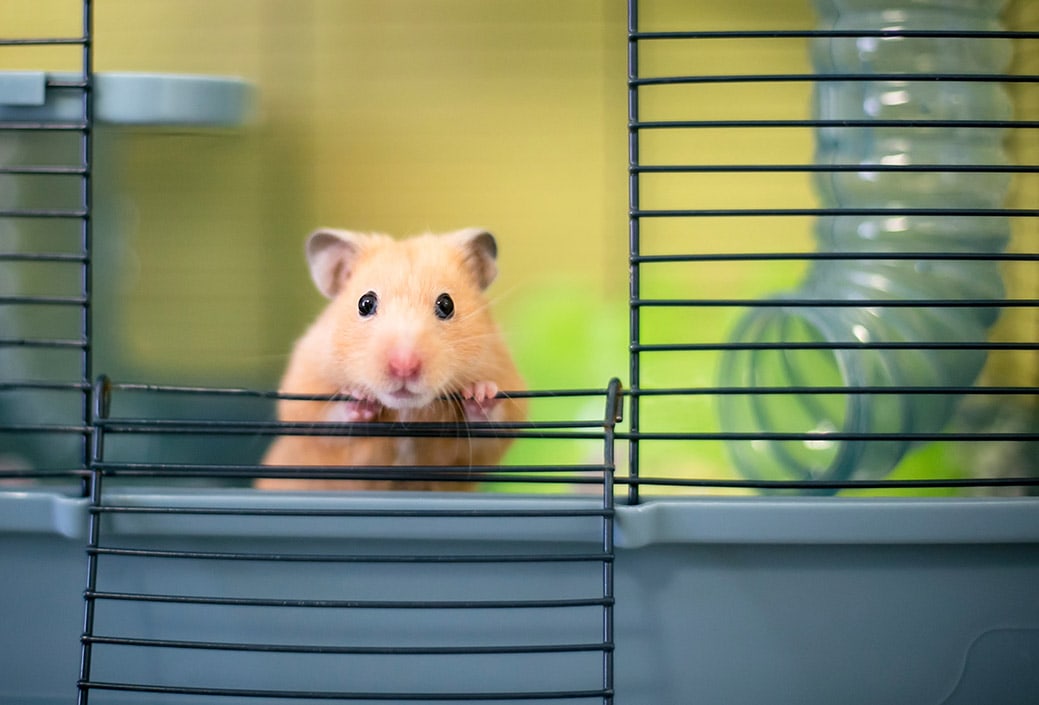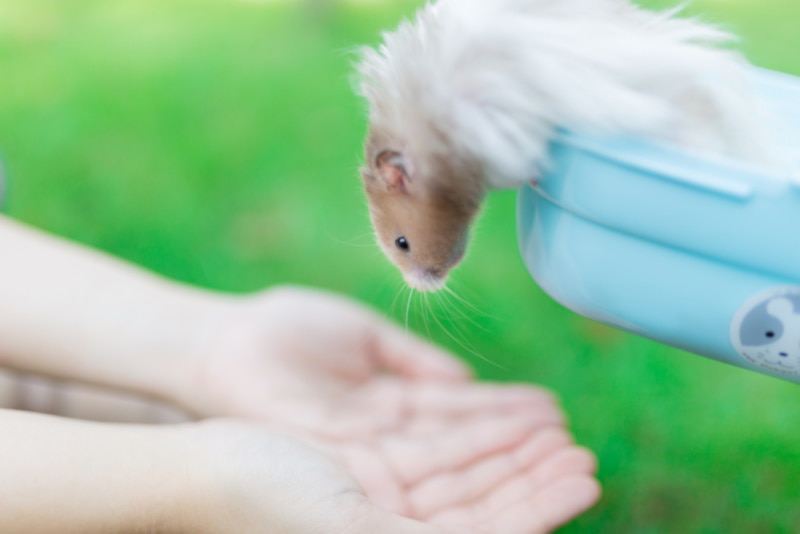If you’re a hamster owner, you may be wondering if hamsters can jump. After all, they have short little legs that don’t look like they can do much of anything but run on a hamster wheel. But the truth is that hamsters can indeed jump. This often surprises many pet owners as we typically associate jumping with larger animals like dogs or cats.
However, just like these animals, hamsters also possess the ability to leap, though their jumps are not as high or long. The degree to which a hamster can jump depends largely on its breed. Let’s learn more about hamsters and jumping in this article.

Why Do Hamsters Jump?
Hamsters jump for a variety of reasons. Similar to other animals, they might leap to reach a higher platform, perhaps to get to their food or a favorite toy. They could also jump to escape from a perceived threat. If your hamster feels threatened or scared, it might try to jump out of its cage or off your hands to find a safer spot.
Another reason why hamsters jump is simply because they’re feeling playful. Hamsters are active creatures and enjoy moving around, exploring their surroundings, and playing with their toys. Jumping can be a part of this playful behavior.
In addition, climbing and jumping can be considered normal behavior for hamsters because it comes from their instinct. In the wild, hamsters live in burrows and often need to climb or jump to navigate their environment. Even though pet hamsters live in a much different environment, they still retain these instincts.

How High Can Dwarf Hamsters Jump?
When it comes to dwarf hamsters, there is limited information regarding their jumping abilities in comparison to Syrian hamsters. For example, Syrian hamsters, which are one of the larger hamster breeds, can make a standing jump of around 15 inches, sometimes slightly higher. However, the actual height from which they can jump may be reduced when you take into account the bedding and toys that fill their cage.
Nevertheless, due to their smaller size, it is generally believed that dwarf hamsters have a lower jumping capacity. Despite this, dwarf hamsters remain agile creatures. They excel in climbing and can utilize their agility effectively to navigate their cage or play area.
It is also important to note that although dwarf hamsters may not jump as high, they are often more active than their larger counterparts. As a result, they may engage in jumping more frequently. Therefore, it is equally crucial to ensure that their environment is safe and suitable for their energetic nature.

Comparing Hamster Jump Heights with Other Animals
To fully appreciate the jumping ability of hamsters, it can be helpful to compare them with the jumping heights of several other animals and humans. For instance, an average adult human can typically jump 16–20 inches from a standing position. Cats, on the other hand, are known for their impressive leaping abilities, and can jump up to 5–6 feet high.
Dogs vary greatly in size and breed, but on average, they can jump around 3–4 feet high. Rabbits, another small pet, can jump up to 2 feet high, while kangaroo rats, despite their small size, can leap an astonishing 9 feet high!
As you can see from these comparisons, hamsters might not be the highest jumpers in the animal kingdom, but they still hold their own. Especially when you consider their small size, their jumping abilities are quite impressive.
| Animal | Jumping Height |
| Hamster | 8 – 15 inches |
| Human | 16 – 20 inches |
| Rabbit | Up to 4 feet |
| Dog (average) | 3 – 4 feet |
| Cat | 5 – 6 feet |
| Kangaroo Rat | Up to 9 feet |
Tips to Ensure Safe Jumps for Your Hamster

If your hamster enjoys jumping and has the space to jump, here are some tips for helping your hamster jump safely.
By following these tips, you can ensure your hamster’s jumps are safe and prevent potential injuries.
FAQs About Hamsters and Jumping

Q: How often do hamsters jump?
A: The frequency of jumping can vary from one hamster to another and depends on factors like their environment, their breed, and their individual personality.
Q: Are there risks associated with hamsters jumping?
A: Yes, there can be risks if the hamster’s environment is not safe. For instance, if their cage is too high off the ground, they could get injured from a fall.
Q: How can I ensure my hamster’s safety when it jumps?
A: You can ensure your hamster’s safety by not placing their cage too high off the ground and by providing plenty of toys and platforms within the cage for them to climb and jump safely.
Q: Can I train my hamster to jump?
A: While hamsters are not typically trained to perform tricks like jumping, they will naturally jump as part of their behavior. It’s important to provide a safe environment for this activity.
Q: What should I do if my hamster jumps out of its cage?
A: If your hamster jumps out of its cage, stay calm and gently pick them up, taking care not to scare them. Check for any signs of injury and place them back in their cage if there are none. If there are signs of an injury, contact a veterinarian.

Conclusion
In conclusion, while hamsters are not renowned for their jumping abilities like some other animals, they are indeed capable jumpers. Their ability to jump is an essential part of their behavior and helps them navigate their environment effectively. By understanding this behavior and ensuring a safe environment, you can help your pet hamster stay healthy, happy, and active.
Featured Image Credit: Akkalak Aiempradit, Shutterstock



